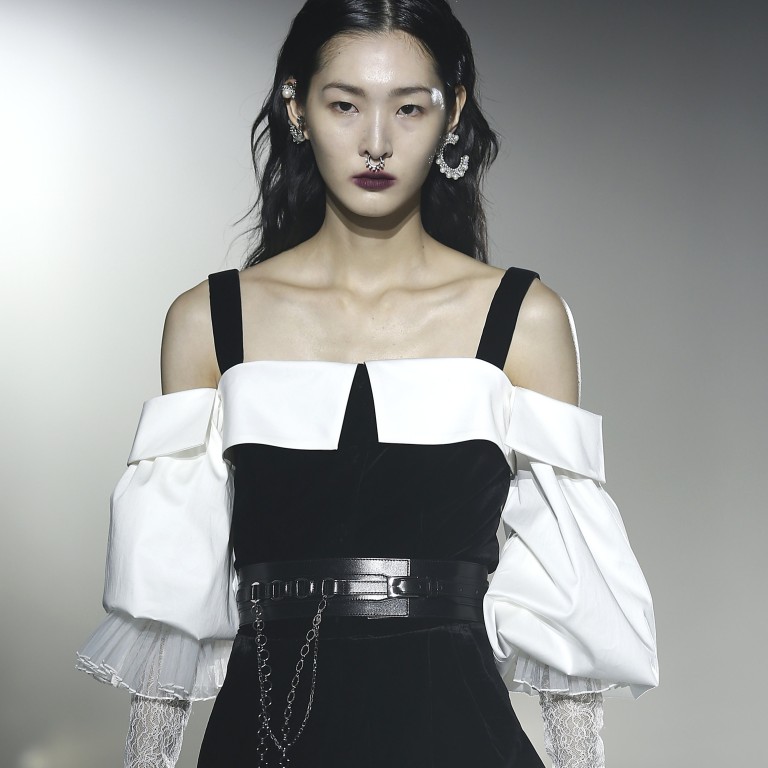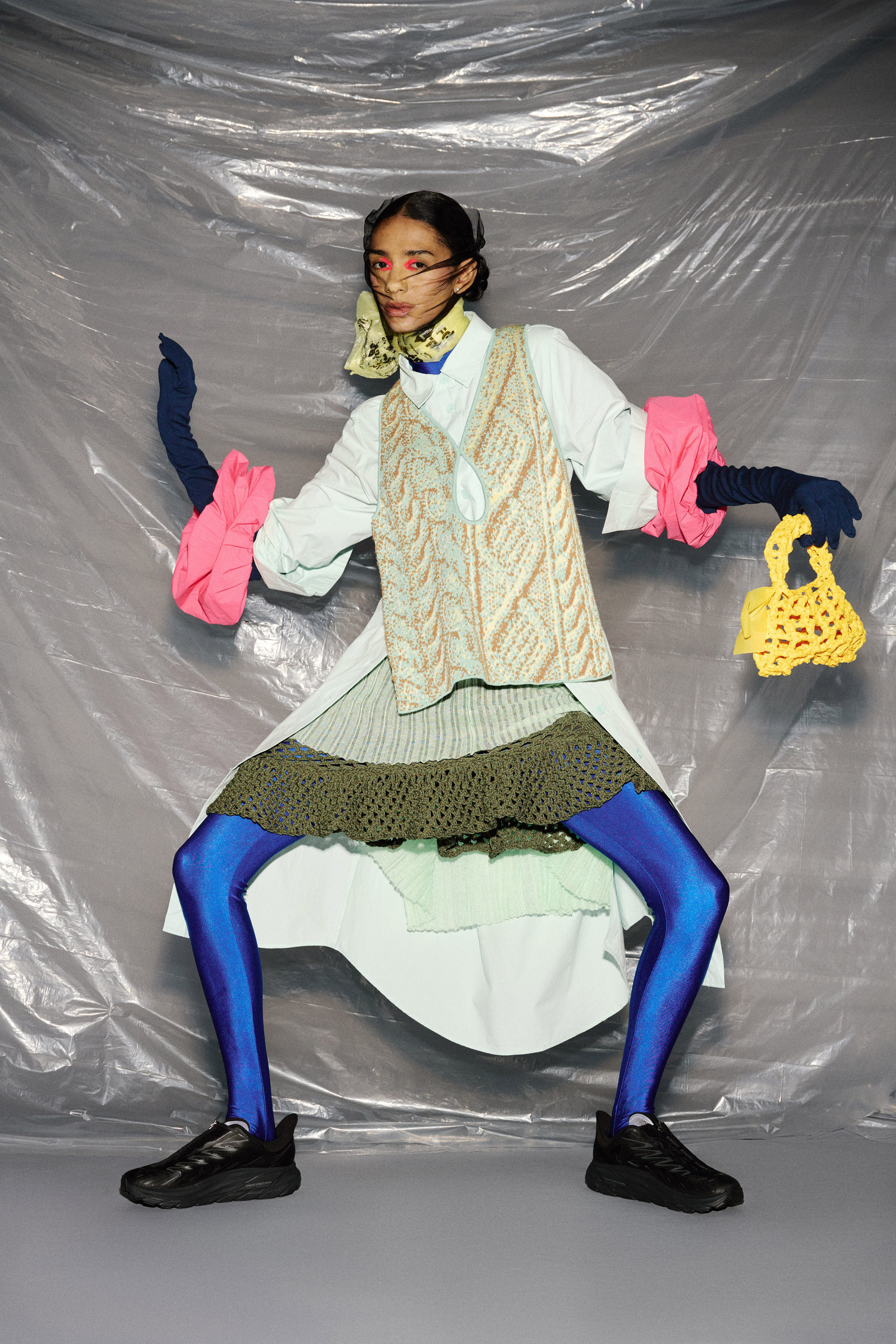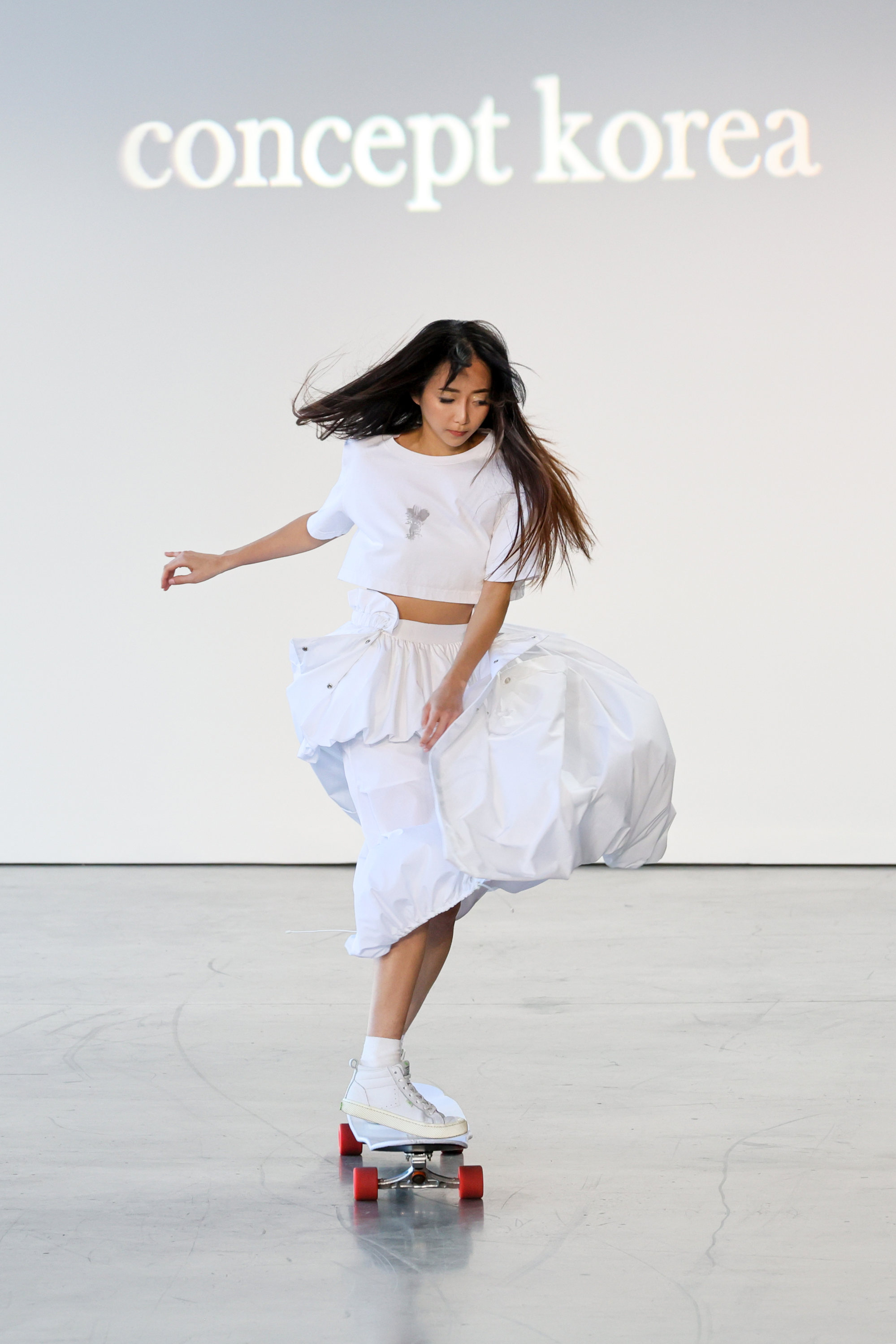
‘Being Chinese is tough’: New York Fashion Week’s Asian designers on stereotypes, and the statements their collections make
- This year’s New York Fashion Week featured a crop of Chinese, Korean and Japanese designers who, through their collections, called for more Asian representation
- They speak about the stereotyping and labelling they face, putting their culture and heritage in their collections, and how they can reach a bigger audience
This year’s New York Fashion Week (NYFW) featured a crop of rising Chinese, South Korean and Japanese designers who brought with them Eastern culture and influences – and who, through the themes of nature, nostalgia and cultural exchange, called for more Asian representation in fashion.
Chinese-born, New York-based designer Wei Lin, founder of knitwear brand PH5, showed an autumn/winter collection at a presentation titled “This is not a jellyfish” at a studio in the city.
Outside, a line snaked around the block; inside the showroom, models stood on an ocean-like structure creating wave formations with their arms.
The knitwear collection, inspired by marine creatures and coral reefs, featured curved silhouettes in underwater blue hues, neons and pastels.

“This season is about going underwater with the jellyfish to see how ocean plastic is a big problem,” Lin, who is also a passionate scuba diver, tells the Post.
Is Crazy Rich Asians really a win for diverse representation in Hollywood?
Lin is outspoken about issues of representation in the fashion industry. One of the major challenges she says she faces is the stereotyping and labelling she gets as a Chinese designer in the US.
“Why do we have to be an American brand or a Chinese brand?” she asks. “My team is from all over the world. Being Chinese is tough because it isn’t loved politically by anyone.
“If you’re Japanese, everyone loves Japan. If you’re Chinese, there’s so much negativity against us. We’re not known for creativity, quality, or fashion or having good taste.”

The collection also tied into Breton’s Asian roots – the designer grew up in Taiwan and is a goodwill ambassador for the Taiwan Tourism Bureau – and marked a continuation of his work championing the Chinese island territory.
“When you grow up [in Taiwan], you grow up around nature. You grow up believing in this idea that nature and the sea, everything flows,” said Breton, who was a dancer for years and who works to create ease and comfort in his tailored pieces.

She can recall dragging her dad around Harajuku in Tokyo in search of X-Girl, a streetwear brand founded by Kim Gordon of alternative rock band Sonic Youth.
While Maeda’s new collection, “Ichi”, is inspired by grunge’s androgynous aesthetic and her own American upbringing, her designs reference traditional Japanese attire – including garments like the kimono.

Also on show at NYFW was the Asia Fashion Collection – an incubation project from Vantan and Parco Co. Ltd featuring looks from up-and-coming designers from the continent.
This year, the project featured looks from five labels: désir by Jun Nakamura, Saika by Saika Sekita and Asato by Asato Kitamura, all from Japan; Taiwanese label Chiahung Su by Su Chia-hung; and South Korean label FromWhere by Lee Young-eun.
A common theme among the designers was oversized clothing, from large comfortable skirts to embellished jumpers and full-length hooded coats.

There were more references to Asian cultures throughout NYFW – the Japanese brand Dokka Vivid, for example, had models carry lanterns as a nod to their heritage.
Private Policy, a New York-based genderless brand co-founded by Chinese designers Haoran Li and Siying Qu, who hail from Qingdao and Xining in China respectively, showed a collection called “We are all animals”.

South Korean designers were highlighted during the Concept Korea show, with three brands from Seoul showing their autumn/winter collections: Besfxxk, which gives classic garments a more experimental edge; Cahiers, with its clever play on the school uniform; and Ulkin, a brand that takes inspiration from industrial uniforms.
Besfxxk’s collection was inspired by items like the trench coat and the smoking jacket, says Kim Bona, who founded the brand with her husband, Lim Jae-hyuk.
The brand, worn by artists like R&B singer Monica and K-pop group Girls Generation, incorporates design elements from Asian clothing – think plaid school uniforms, woven fabrics, collared shirts and frilly accents.
Kim says Asian designers rarely get the credit they deserve. “It takes a certain level of market understanding … and a strong dedication to brand distribution in different markets [to do well].”

Cahiers’ uniform-like looks tap into the nostalgia that surrounds teenage culture while evoking themes of “regulation, control and uniformity”, says designer Kim Ayoung. The brand, worn by the likes of K-pop artists IU and Bae Suzy, reflects a Korean sensibility through its silhouettes and colour palette.
For Ulkin designer Lee Sung-dong, the brand’s new, industrial-inspired collection is all about safety. “We often face many risks and threats, but there are times when we don’t even realise that we are in danger,” says Dong.
The upcycled collection, which mimics details and silhouettes from workwear and construction uniforms, centre around these blind spots. The hibiscus flower, the national flower of South Korea, features in many of the pieces.
“We believe using elements that represent the nation and culture empowers brand identity and [heritage],” says Lee.
“Being successful in each market is about competitiveness and opportunity, which comes from a strong business model and strategy,” he says. “NYFW is a global show, so it’s a great opportunity to reach out and expand.”
